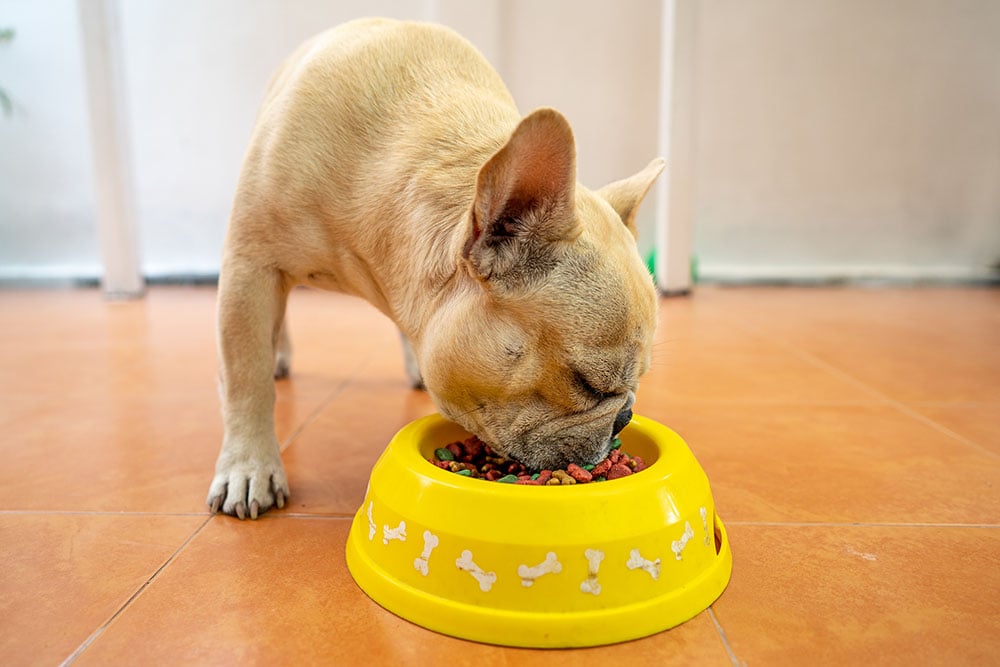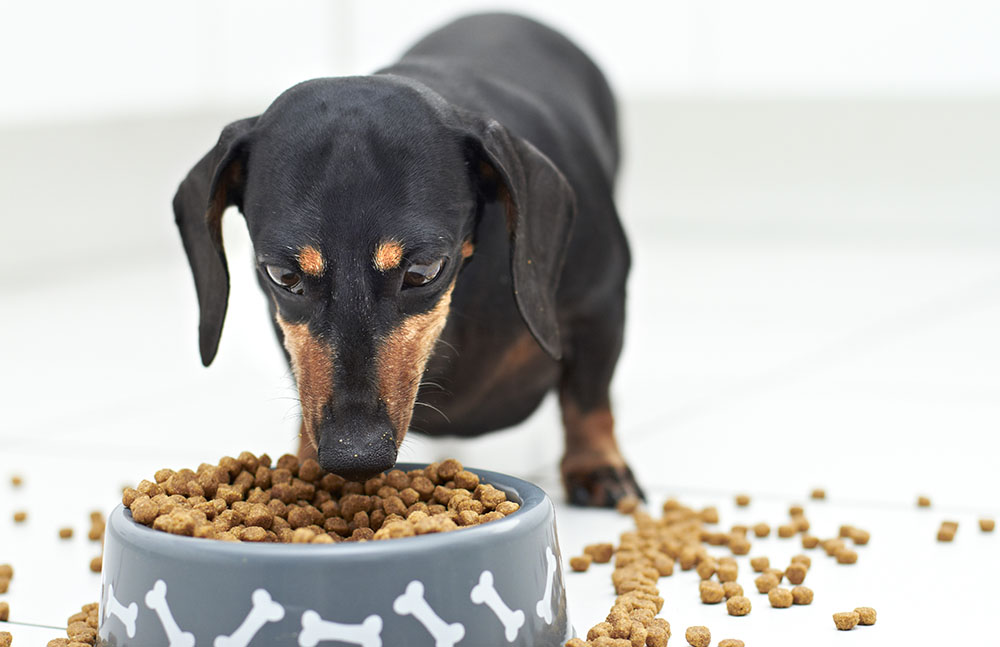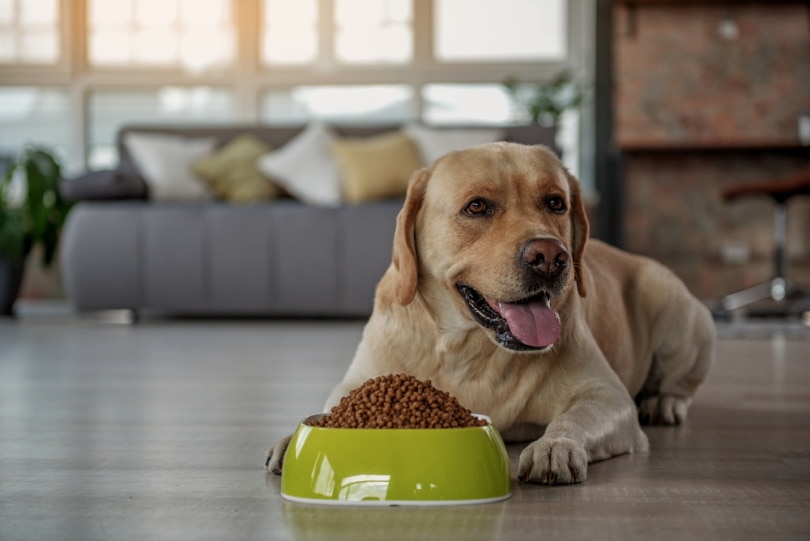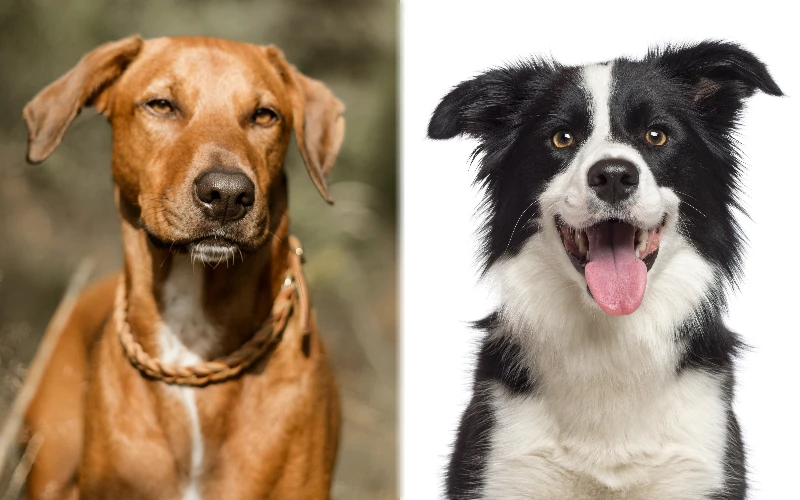Powdered Cellulose in Dog Food: Controversy Explained
Updated on

Powdered cellulose is a common ingredient in dog food, but many people don’t know much about it. If you’ve noticed it in the dog food your canine eats, you were probably confused about what it is and how it affects your pet.
There’s a lot of controversy regarding whether this ingredient should be in dog food or not, so we want to shed some light on this topic. Keep reading to learn more about powdered cellulose in dog food and its effect on dogs.
Common Ingredients in Dog Food You Should Avoid
While dog foods contain many beneficial ingredients that benefit your dog, they can also contain fillers and other additions that might not be necessary inside the food. Here is a list of typical ingredients inside dog food that you should typically avoid:
- Powdered cellulose
- Vegetable oil
- Salt
- Peas
- Soy
- Wheat
- Corn syrup
- Gluten
- White flour

What is Powdered Cellulose?
Pet dog food manufacturers use many different ingredients, and while some are effective, others are more economical. Some of the main goals of these manufacturers are to produce nutritious food while helping dogs to have regular stools.
To achieve their goal, many manufacturers try to create a balance between healthy ingredients and fillers, and that’s where powdered cellulose comes into the picture.
Cellulose has been a frequent add-on in various recipes, including human and dog food. However, it’s actually wood or plant fibers, which are largely indigestible. Powdered cellulose represents cellulose turned into an odorless, tasteless powder with little to no nutritional value.
Commonly, manufacturers derive this ingredient from cotton, paper, or similar materials, baking the wood and getting rid of the water inside to make a powder. When powdered cellulose is added to food, it acts as an emulsifier or a binder, and it’s a standard replacement for fruits, vegetables, and other fiber-rich ingredients.
In dog food, cellulose helps bulk the diet out without adding extra calories to the recipe. Still, instead of using actual fibers, this replacement is not the best option for your dog. Powdered cellulose does have approval from the FDA as safe for use in dog food, but it’s not healthy for your pet.
Nutritional Value
When it comes to the nutritional value of powdered cellulose, there’s none, which is one of the reasons you should try to avoid this ingredient in dog food. It doesn’t contain calories, proteins, vitamins, minerals, or anything your dog actually needs.
Inside the food, powdered cellulose is supposed to act as a dietary fiber, which is a component that helps your pup have regular digestion and normal stools. However, high-quality dog food manufacturers will use fruits and vegetables to achieve the same effect on your dog’s digestion.
Benefits and Disadvantages
Powdered cellulose inside dog food has disadvantages you should be aware of before buying dog food containing this ingredient. Below you can see all the pros and cons of the effects of powdered cellulose on your dog.
- Helps your dog have regular stools
- Improves your dog’s metabolism
- Aids growth of beneficial gut bacteria
- No nutritional value
- Fiber extracted from plants/wood
- Possibilities of bloating, constipation, and diarrhea

Fiber Inside Dog Food
- Aiding in digestion
- Maintaining a balanced weight
- Improving diabetes mellitus
However, it’s important to know the source of the fiber as it can come from an array of origins like:
- Beet pulp
- Tomato pomace
- Buckwheat
- Fruit pectin
- Guar gum
- Flaxseed
- Powdered cellulose
While beet pulp and tomato pomace have well-known, natural origins, we can’t say the same for powdered cellulose. Dogs need fiber but it’s much better to provide fiber coming from broccoli, pumpkin, mushrooms, berries, fruits, kelp, or leafy greens.
These ingredients will help your dog digest processed foods, while powdered cellulose only increases the stool volume without providing nutritional benefits for your canine.
Is It Safe for Dogs?
Powdered cellulose is safe for your dog and shouldn’t harm them in any way. However, you need to remember that powdered cellulose is a derived carbohydrate that manufacturers add to dog food because of its bulking qualities and low price. It represents a budget-friendly replacement for fiber, and it’s safe for both human and dog consumption.
When you feed your dog food that contains powdered cellulose, the dog won’t be able to digest it, so it will move through the digestive tract intact. Without the nutritional value and the lack of digestive properties, powdered cellulose has almost no value to your dog.
As this ingredient is not a part of what a balanced dog diet should be, it might be best to try to avoid dog foods that contain powdered cellulose. In the long run, you want to make your dog as healthy as possible, so more natural ingredients will be of much benefit.
Can Dogs Digest Powdered Cellulose?
While some animals like sheep, horses, and goats have stomach bacteria that digest powdered cellulose, that’s not the case with dogs. As we already mentioned, dogs can’t digest powdered cellulose. However, that’s one of the main reasons this ingredient is added to dog food; it provides bulk for the feces and increases its ability to absorb water.
Because of that, your dog should have regular bowel movements and well-formed poops.

Is Powdered Cellulose a Good Addition to Dog Food?
Powdered cellulose adds a dose of controversy to dog food because some people approve of it while some don’t. That’s because of the lack of nutritional value and its source. By labeling powdered cellulose as an ingredient, dog food manufacturers can avoid giving out information about its true origin.
Some dog food manufacturers use more significant amounts of powdered cellulose to avoid adding healthier, more expensive, ingredients. Of course, some brands choose more beneficial alternatives, such as:
- Dried beet pulp
- Tomato Pomace
These ingredients represent a better option, although they also raise some concerns, like their pesticide levels. If you include it in your dog’s diet, consider the amount of powdered cellulose compared to other dietary fiber sources. Remember that this is still a filler and that there are more suitable replacements for it.
It’s up to you as a dog parent to decide if this is the product you want to use or not after comparing all the positive and negative sides of powdered cellulose. You can always consult your vet to seek their opinion about this topic, as a hands-on experience might help you decide if you’re going to use powdered cellulose or not.
Final Thoughts
Although you can include powdered cellulose in your dog’s diet, we suggest finding more natural replacements. They might be a better option as they have nutritive properties, unlike powdered cellulose, which has no nutritional value. However, powdered cellulose is FDA-approved, so you can use dog foods that contain it if that’s something you feel comfortable with.
Featured Image Credit: Tienuskin, Shutterstock













